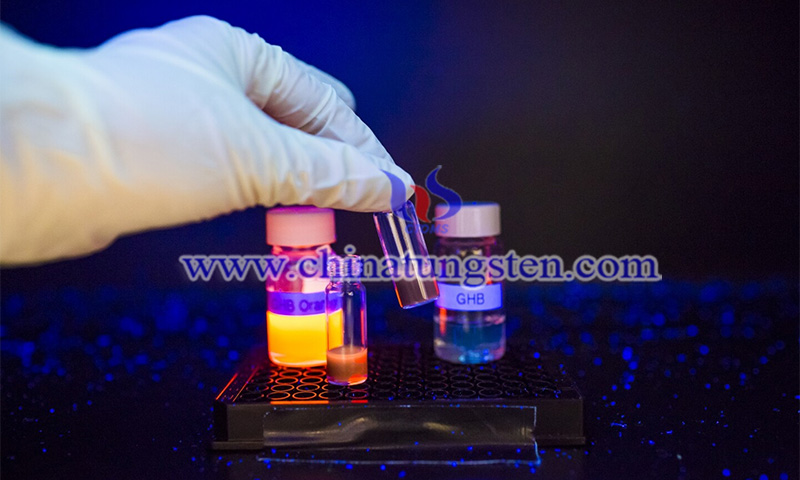Molybdenum Disulfide-Based Fluorophore Preparation and Sensing Applications
- Details
- Category: Tungsten Information
- Published on Wednesday, 02 March 2022 23:05
Recently, the State Key Laboratory of Organic Electronics and Information Display, Institute of Advanced Materials, Nanjing University of Posts and Telecommunications (NUPT), published a paper in the academic journal Biosensors (2022, 12) by the first author Lingbo Gong, introducing the preparation of molybdenum disulfide (MoS2)-based fluorophores and sensing applications.

MoS2 nanosheets are an emerging layered nanomaterial with excellent chemical and physical properties and are considered ideal support substrates for designing nanoprobes to build sensors. In the past decade, MoS2 as an emerging material has attracted increasing interest from scientists to construct MoS2-based nanoprobes due to its inherent advantages, including large-scale preparation, tunable bandgap, good biocompatibility, easy functionalization with inorganic/organic groups, and outstanding optoelectronic properties.
Molybdenum does not occur on Earth as a pure metal, but in various oxide forms in minerals. In its monomeric elemental form, molybdenum is a silvery-gray metal. It readily forms hard, stable carbides in alloys, which is why most of the world's molybdenum (about 80 percent) is used as an additive in steels, including high-strength alloys and high-temperature alloys.
The sensors have been used as a powerful tool for the analysis of chemical/biological molecules in combination with different detection methods such as fluorescence, electrochemistry, electrochemiluminescence (ECL), colorimetry, surface-enhanced Raman scattering (SERS), and surface plasmon resonance (SPR).

To improve analytical performance, many signal amplification strategies have been introduced into the construction of sensors, including DNA amplification techniques, DNA walkers, enzyme-assisted signal amplification, and nanoprobes. With the rapid development of nanomaterials, nanoprobes are considered a very promising signal amplification strategy to improve the performance of sensors.
The introduction of MoS2-based nanoprobes implies the combination of sensors with different analytical methods, and this combination has been successfully applied in environmental monitoring, food safety, biochemical analysis, disease diagnosis, and even homeland security. With the help of MoS2-based nanoprobes, the developed sensors exhibit high sensitivity, selectivity, and stability in the detection of chemical and biological molecules.
The signal units are assembled on MoS2 nanosheets to form MoS2 nanoprobes, which exhibit high molecular recognition, excellent chemical stability, acceptable biocompatibility, and strong signal amplification. In addition, MoS2-based nanoprobes can be easily combined with other signal amplification strategies to further amplify detection performance, including sensitivity, selectivity, reproducibility, stability, etc.
Despite the great progress in sensing applications, MoS2-based nanoprobes still face some challenges in practical applications. Firstly, the quality and large-scale preparation of MoS2 nanosheets and their nanocomposites should be addressed. Secondly, the recognition unit or signal amplification unit should be effectively assembled on Molybdenum disulfide nanosheets and their nanocomposites. Finally, the optimal combination of MoS2-based nanoprobes and detection methods is another important influential parameter to obtain better analytical performance.
| Molybdenum Supplier: Chinatungsten Online www.molybdenum.com.cn | Tel.: 86 592 5129696; Fax: 86 592 5129797;Email:sales@chinatungsten.com |
| Tungsten News & Prices, 3G Version: http://3g.chinatungsten.com | Molybdenum News & Molybdenum Price: http://news.molybdenum.com.cn |



 sales@chinatungsten.com
sales@chinatungsten.com